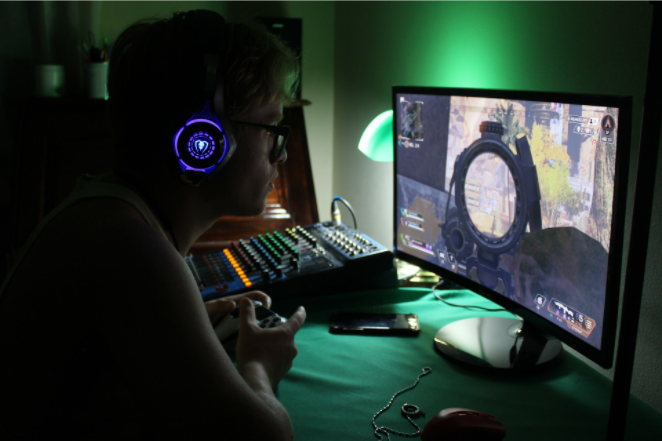If you’ve seen and used one Razer Blade laptop in the last couple of years, you’ve seen them all. The new Blade 15 Advanced is another monochromatic, solid machine made out of aluminium. However, this one is a beast compared to the others when you take a look inside. With enough yearly upgrades, it ensures that you’re always in the position of having the best gaming tech to make gameplay feel more realistic.
Find out more about the Razer Blade 15, along with an honest review below.
An advanced review
At almost the highest point of Razer’s configuration tree sits this $1,599.00 model. It has an incredible eight-core Intel Core i7-10875H processor, Nvidia’s RTX 2080 Super Max-Q design chip, 16GB of RAM, and a 1TB NVMe SSD. Finishing it off, is a 1080p display that has a 300 Hz refresh rate. This set-up is incredible and has no problem playing the most popular games at high frame rates with its displays of 1080p resolution.
It’s also a lot easier to fit in a bag than most of the other bulky gaming laptops on the market. The new laptop comes with a strong port selection with Thunderbolt 3 and a speedy SD card reader that is perfect for video editors and photographers.
Gaming performance with this specific design is out of this world for most titles, as expected with the specs inside. The typical range of benchmarks being Remedy’s Control and Rocket League; the first being a game that can genuinely push PCs beyond their limits, and the latter being a high-speed game that requires accuracy. Control ran at a precise 110 frames each second at their highest settings, while Rocket League ran higher with a consistent 250 frames each second.
If you’re keen on a laptop that has an RTX 2080 Max-Q, then you’re probably also interested in making the most of ray tracing features in games that fully support it. Luckily, that is possible with the Razor Blade 15. While this feature can improve your gaming experience it does show some of the GPU’s shortcomings. The previously mentioned Control, with all of the lovely ray tracing features changed to their most noteworthy, brings the frame rate down to roughly 40. Fortnite fared worse than others, averaging around 25 frames each second with its ray tracing features switched on. Given Fortnite’s extensive guide and dynamic nature contrasted with a scripted game, this gap in performance makes sense. However, it is surprising that this is where the laptop falls short.
Fortunately, Nvidia’s DLSS (deep learning super sampling) feature assists with raising the frame rate of ray tracing gameplay without too recognizable a hit in the quality of the visuals. Using it permitted the Blade 15 Advanced to run the ray tracing features on Control at roughly 100 frames each second. Fortnite was still a challenge, with the “performance” DLSS setting bringing it to a moderately steady, yet not extraordinary, 50 frames each second.
You can have an excellent gaming experience on the Blade 15, but you may have to change a couple of settings to get the best visual quality. Turning on DLSS is a cop-out because the framework can’t manage with ray tracing (with regards to Control’s matter, it drops the delivery down to 720p, then, at that point, upscales with AI). Yet, it does still look extraordinary on a 1080p display. It’s a brilliant cop-out.
A great gaming machine, but a less-than-great laptop
While gamers can frequently make considerable sacrifices in usability to achieve an ideal gaming performance, assessing a laptop for efficiency and innovative work requires an entirely different set of benchmarks. That is where we see the Blade 15 Advanced begin to falter.
Be that as it may, while Blade 15 dominates in certain areas, it is disappointing in many others. The speakers might be loud, but they need to dull out the noise from the laptop’s fans, which can be annoying, to say the least, especially when trying to concentrate on getting work done.
The Blade 15 is excellent at face value, with its backlighting for every key and spacious design. Yet, even after weeks of using it for normal laptop usage, it’s challenging to get used to the shallow travel of the keys and the confusing placement of the arrow keys. This allows for repeated errors, like choosing text when you’re trying to type a question mark, all because the up arrow is placed to the left of the right shift key, where the question mark/forward slash key is placed on most other keyboards. Safe to say that this keyboard is not ideal if you plan to use this laptop for work purposes.
Although the Blade’s glass trackpad is spacious and smooth and supports multi-finger signals, it still has weak palm rejection making the cursor hop around the screen erratically when you type.
Our final say

Ultimately, the actual deal-breaker when it comes to using the Blade 15 as a standard laptop is its exceptionally poor battery life. That said, gaming laptops have never had incredible battery life, with even the most highly rated lasting only five or six hours between charges. The Blade 15 doesn’t last that long: with the average work process of browsing the internet, checking emails, using Slack (or any other project management site), composing Word documents, watching YouTube videos, and the occasional video conference, the battery lasts an average of three hours between charges, a long way from the “up to 6 hours” advertised by Razer.
Other than that, the Razer Blade 15 laptop will meet all your gaming needs and is definitely worth the purchase if you don’t rely on your laptop for work purposes.








